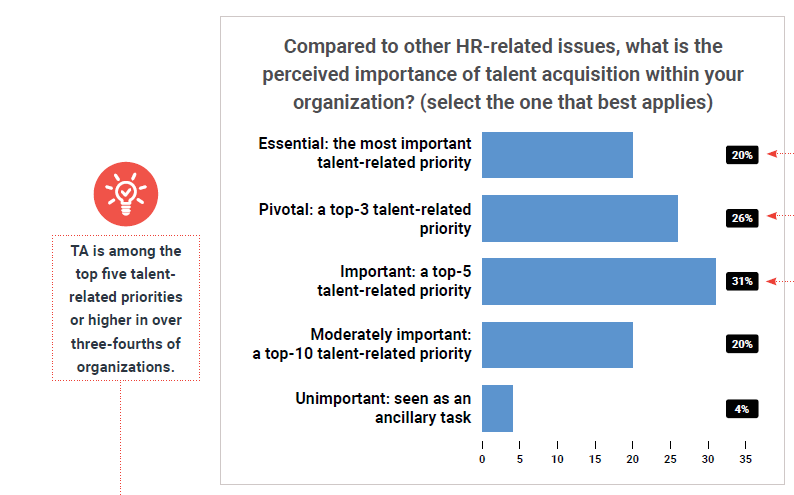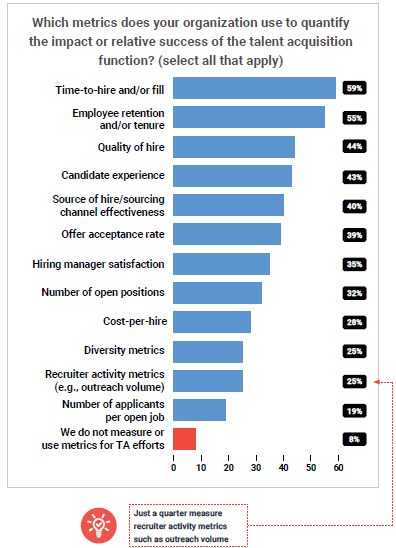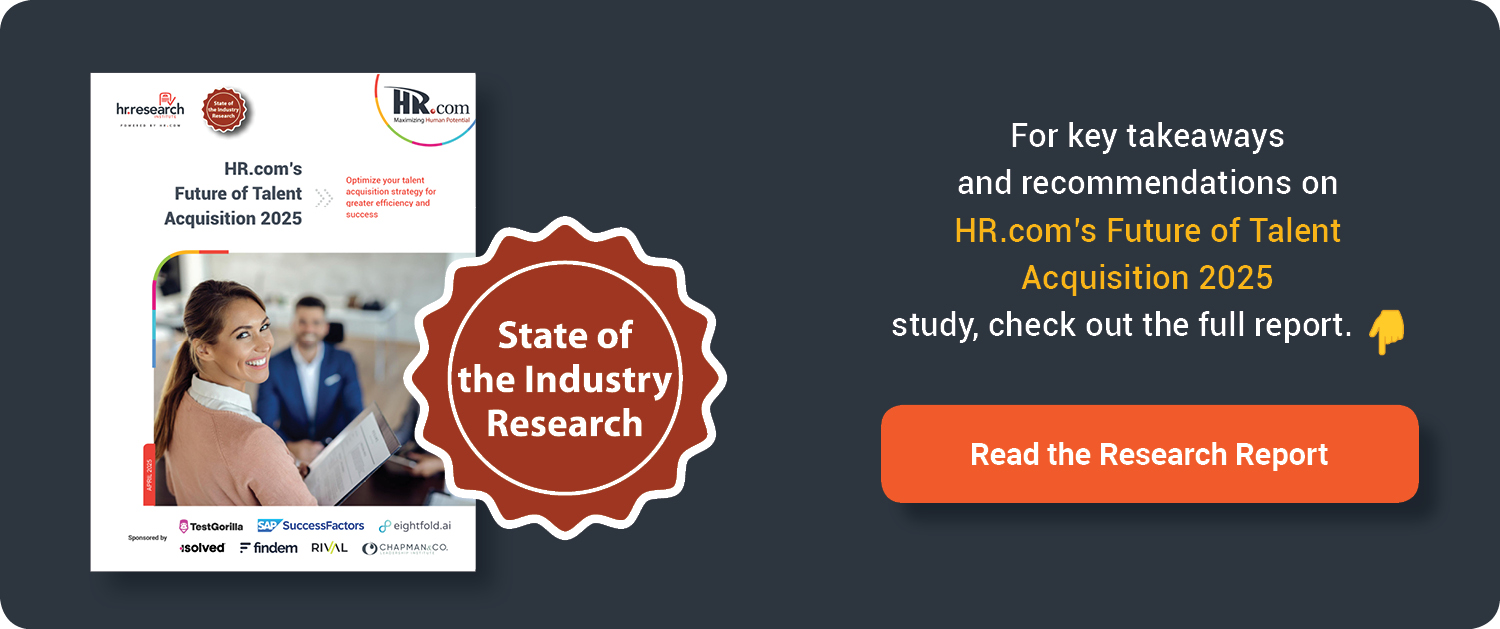Research: HR.com’s Future Of Talent Acquisition 2025
Optimize your talent acquisition strategy for greater efficiency and success
Posted on 04-21-2025, Read Time: 6 Min
Share:

Yet, the human touch remains essential in talent acquisition (TA).
In 2025, TA is being reshaped by two powerful forces: a deepening talent shortage and rapid advancements in technology. With the U.S. projected to face a shortfall of over 6 million skilled workers by 2030, organizations must rethink outdated hiring models.
According to the findings of 'HR.com’s Future of Talent Acquisition 2025' research report, although talent acquisition strategies are evolving, many organizations remain behind the curve. Over half (51%) still rely on reactive, just-in-time hiring, and only 5% consider their TA function world-class—revealing a significant gap between goals and execution.
At the same time, TA remains a priority for most. About 46% ranked it among their top three HR focuses. Building strong talent pipelines (63%) and improving employer branding (55%) are key goals, though 53% report a lack of skilled candidates. Only 30% plan to increase their TA budgets in 2025, finds the report.
This research report, examines:
- differences between TA leaders and laggards in strategic alignment and tool integration, highlighting how leading organizations outperform laggards in improving talent acquisition practices.
- challenges in talent acquisition and workforce planning
- prioritization of talent acquisition in HR functions
- use of talent acquisition technologies and metrics
- impact of AI and predictive analytics on talent acquisition
- consolidation and adoption of new TA tools
Here are the major findings from the report:
Transforming and Advancing Hiring Strategy
Finding: Just-in-time hiring dominates talent acquisition strategies
About half of organizations (51%) rely on a just-in-time talent acquisition approach, reflecting a reactive hiring strategy rather than proactive workforce planning. Another 37% describe their talent function as advanced, indicating structured processes with room for improvement. Only 5% consider their approach world-class, highlighting a gap in strategic, forward-thinking hiring practices.
Turning Talent Strategy into Action
Finding: 46% percent say TA is among their organization’s top three HR priorities today at the least
Talent acquisition is the most important talent-related focus for 20% of organizations, with an additional 26% recognizing it as a top-3 priority. This data highlights the growing recognition of recruitment as a strategic function rather than a mere ancillary task. HR professionals should capitalize on this shift by positioning talent acquisition as a central element of the organization's success. By elevating recruitment to a top-3 priority, organizations can attract and retain the best talent, which directly impacts overall performance.

Key Metrics for Talent Acquisition Success
Finding: Time-to-fill/time-to-hire retains its top spot as the most cited metric to assess TA success
Organizations are increasingly focusing on key metrics to evaluate their talent acquisition efforts and success. Time-to-hire (59%) is the most commonly tracked metric, followed by employee retention (55%) and quality of hire (44%). Metrics like source of hire (40%) and candidate experience (43%) are also being used to refine recruiting processes and improve the hiring journey. Despite this, 8% of organizations do not track any metrics, which can limit insights into the effectiveness of their talent acquisition strategies. HR professionals should consider broadening the scope of metrics they track to ensure a more holistic view of their TA performance and align it with both immediate and long-term business objectives.

Maximizing Technology Adoption in Talent Acquisition
Finding: About three-fourths of organizations use an applicant tracking system (ATS) in their hiring process
Most organizations rely on a variety of talent acquisition technologies to streamline their recruitment efforts. The most widely used tools include ATS (73%) and job boards/aggregators (70%), which help manage candidate pipelines and job postings. In fact, these remain the top TA technologies reported over the last three years.Tools such as video interviewing software (33%) and assessments/skills testing (34%) are increasingly incorporated to enhance the hiring process.
However, a small percentage (4%) still report not using any dedicated TA tools. HR professionals should evaluate the effectiveness of their current tools and consider integrating additional technologies to optimize recruitment processes and improve candidate engagement.
Error: No such template "/CustomCode/topleader/category"!


